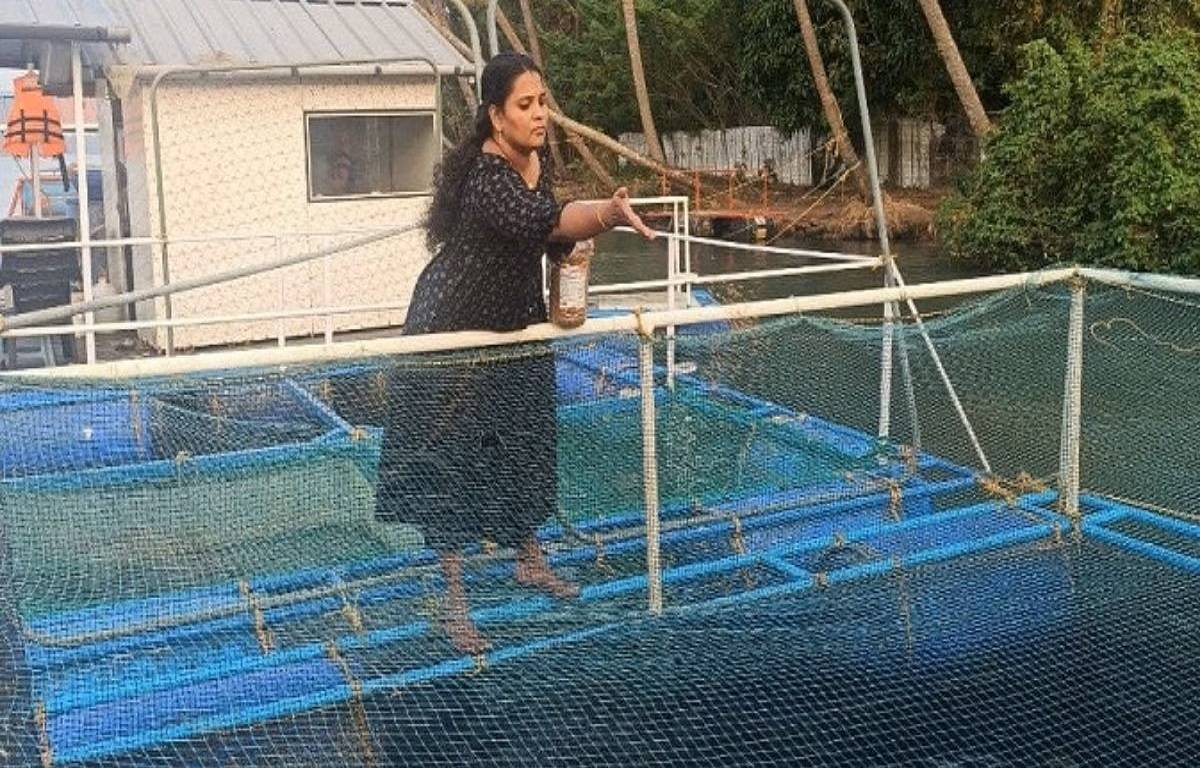
In Ernakulam, about 40 metres from the Periyar River's banks, close to Moothakunnam, you can find a large number of cages housing numerous fish species. Smija M. B., 38, who regularly catches and feeds the fish, looks after and protects them.
As part of the Blue Revolution, the Department of Fisheries developed its cage fishing initiative in 2018. The project intends to encourage more farmers to enter the field, especially women and members of reserved castes/tribes, while world fish production is declining as a result of climate change. Kerala received about 500 cages as part of this.
The project started in Kannur and eventually made its way to Ernakulam, where Smija—who also serves as a workshop instructor at SNM INT Engineering College—decided to take up the cause—decided to continue it.
Growing fish in already-existing water resources like rivers, ponds, lakes, or the ocean is known as cage fishing or cage culture. As a result, the fish can be kept in a net cage comprised of a floating frame, net materials, and mooring system while still being in free-flowing water. The positioning of cage farms takes use of natural currents, which give fish oxygen and other suitable natural conditions.
Smija’s Journey with Cage Fishing:
"Being born into a family of fisherman laborers gave me a genuine passion for the field. Like me, my husband is passionate about fish farming and breeding. We used to do this on a modest basis before. Since neither of us had stable employment, we started cage fishing, Smija tells The Better India.
With the help of technical advice from the Central Marine Fisheries Research Institute (CMFRI), several women from Smija's neighborhood took part in the research, according to her.
A no-objection certificate, which the farmer receives from the panchayat in exchange for a fishing license, is required in order to cultivate in the river area. Every year, it needs to be renovated, and the cost is determined by the quantity of space used. Smija, her husband Unnikrishnan, and three more shareholders contributed about Rs 10 lakh to this farm in addition to the CMFRI's subsidy.
Three cages containing four different fish species were initially set up: sea bass, bluefin trevally, green chromide, and mangrove red snapper.
"The 2018 floods negatively impacted us, but fortunately little fish were lost. Fish prices dropped when the market grew dull. We contributed whatever money we had made and increased farming. We built a tiny cabin close to the farm area and added four more cages so that we could keep an eye on them all the time,” says Smija.
A challenge for the farmer has been COVID-19 in addition to the back-to-back floods, primarily because of a lack of availability of suitable feed. "Farming is now a secondary business since we both work. Nevertheless, we still manage to double our yearly investment. For instance, we invested roughly Rs 2 lakh last year and were able to make Rs 4-5 lakh, according to Smija. "This can be a more profitable and income-generating business concept capable of satisfying the needs of a full family if enough feed is supplied and careful care is given," she continues.
According to Smija, each fish has a different harvesting period that might be anywhere between six months and two years. She retails them to people and sells them wholesale to local marketplaces.
The duo claims that special holiday specials promoted via social media and advertising result in speedier sales. On International Women's Day 2021, CMFRI awarded Smija. She claims that this national recognition made her well-liked by aquaculture producers both inside and outside of the state.
She continues by saying that after witnessing her success, the majority of the women in her neighborhood have started cage fishing. "At least ten local women's organizations came to us for information. Additionally, aquaculture research students come to the farm to study the techniques I use.
















